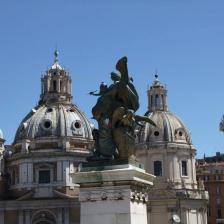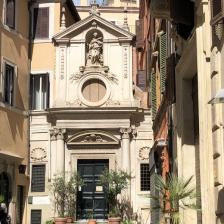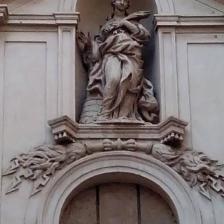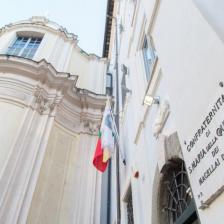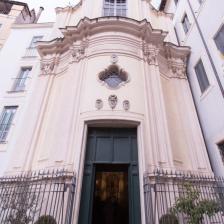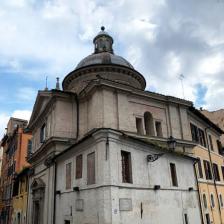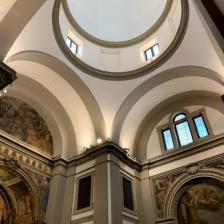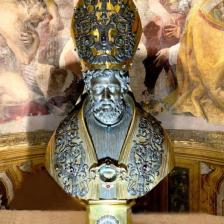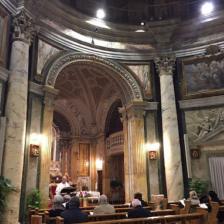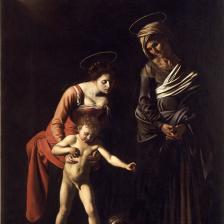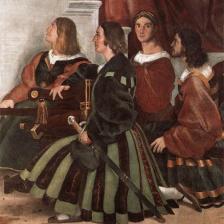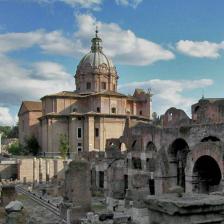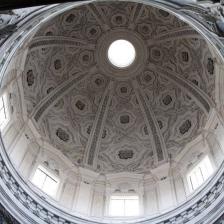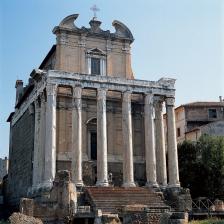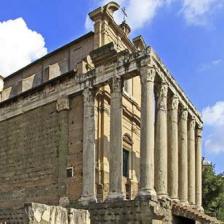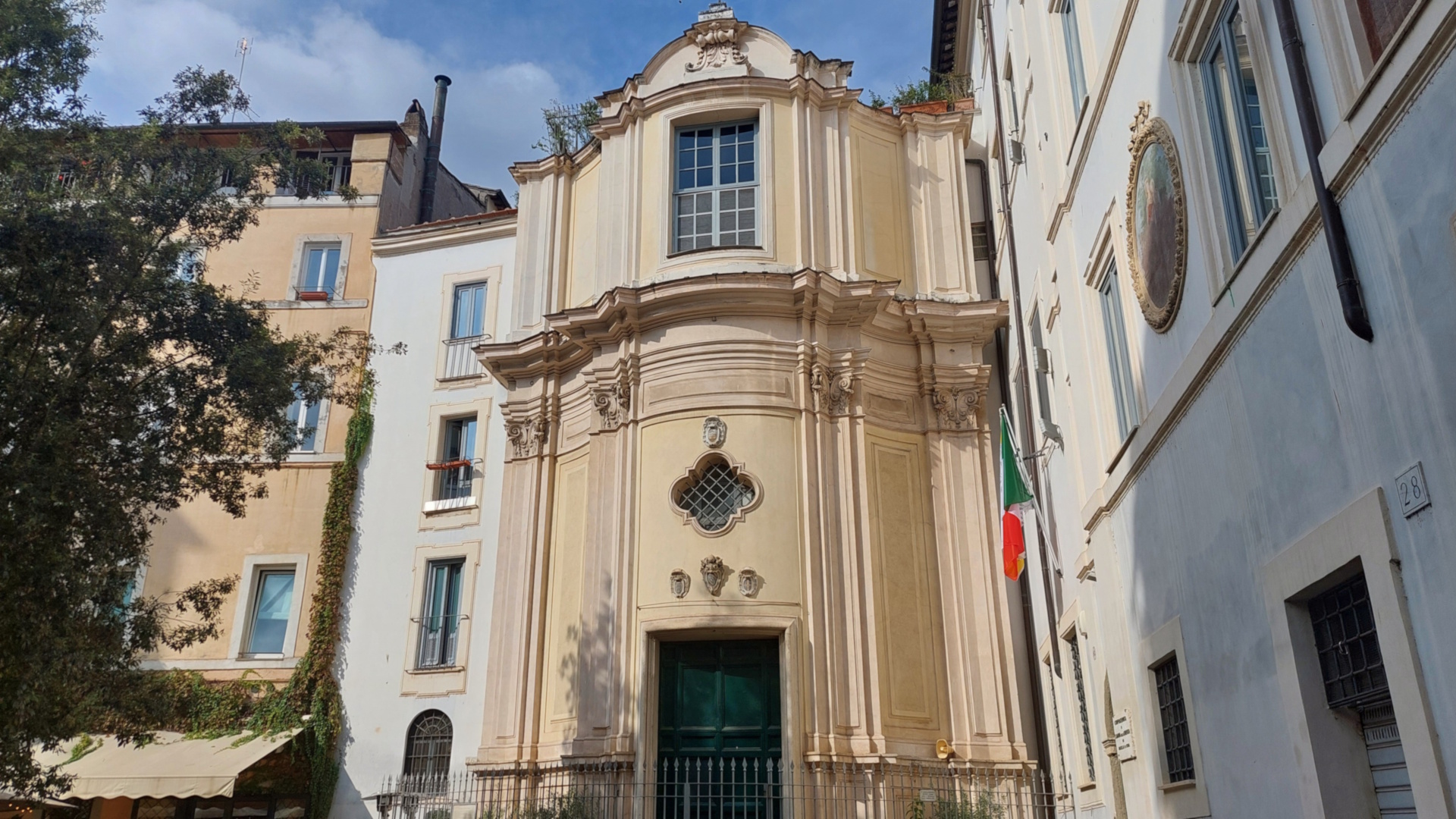
A cultural and artistic heritage, a variety of stories and traditions: the streets of our towns are sometimes named after ancient crafts and arts that were practiced there, but they are not the only ones to keep their memories alive. An example? Just climb the Capitoline steps: hoteliers, masons, bakers and tailors and many others had here, on top of the hill, the official seats of their guilds and are remembered by inscriptions and symbols.
In a city where religion was paramount, it goes without saying that guilds (or Universities, since they gathered the universe of the practitioners of a particular craft) had a cardinal protector at their head, a patron saint and lastly a church, sometimes with an adjoining oratory and hospital. These churches were often administered by the religious confraternity born within the guilds and were for centuries the place where people gathered to attend masses but also to negotiate business.
Read on to find out more about a not-so-vanished Rome and rediscover the beauty, charm and history of our seven guild churches.
#1 Bakers, Santa Maria di Loreto - The oldest statutes of the guild of bakers date back to 1318, although the University – which also included donut sellers, grain measurers and carriers – was officially formed in the mid-16th century. A few years earlier the Roman “fornari” had bought a plot of land right in the area where Emperor Trajan had placed the market for flour and grains: the small church that stood there – housing an ancient image of the Blessed Virgin Mary, under her title of Our Lady of Loreto – was soon demolished to make way for a new building. The architect in charge was Antonio da Sangallo, who designed a square brick box surmounted by a high octagonal drum. About seventy years later, the church was completed with the elaborate dome and bell tower by Giacomo Del Duca. Next to the church, the University built a hospital where poor sick bakers were cared for. In order not to disturb the patients, carriages were prohibited from passing along the road that ran alongside it. The guild was among the first to be suppressed in 1800 but the religious confraternity survived: the Pio Sodalizio dei Fornari Italiani still has its headquarters in the building behind the church and celebrates the feast of Our Lady of Loreto each year on 10 December.
#2 Booksellers, Santa Barbara dei Librai - In the long list of patronages of the popular saint – artillerymen, military engineers, gunsmiths, firefighters, miners, architects, masons, bell makers, umbrella makers – booksellers are not mentioned and until 1500 the small church sitting today at the apex of a small piazza was still known with the name of Santa Barbara alla Regola. In the meantime, however, the booksellers, who had their shops and laboratories in this district, had grown by many units and had given life to a guild and a confraternity, which initially also brought together bookbinders and printers. When Pope Clement VIII gave them the church, they added their patron St Thomas Aquinas to its dedication and started to restoring it. They bought the nearby houses destroyed by a fire for 400 scudi and created the extant little piazza; then, in 1679, after being recognized as a University, they rebuilt the church thanks to the generous funding of the bookseller Zenobio Masotti. The church was the seat of the confraternity until the latter was dismantled in 1878. Inside it, a trap door leads to the burial place of some booksellers, preceded by a bookish inscription: “SODALIBUS BIBLIOPOLIS DONEC APERIATUR LIBER ÆTERNITATIS”, “for the confreres of Bibliopolis up until when the book of eternity will open”.
#3 Butchers, Santa Maria della Quercia - The dedication of the church is a direct reference to the important Marian sanctuary in Viterbo named after a sacred image painted on a tile and found on an oak tree. At the beginning of the 16th century, a group of expatriates from Viterbo – who were living in the Rione Regola and were mostly cattle traders or butchers – asked for and obtained a small church near Campo de’ Fiori where they could pray Our Lady of the Oak Tree. The church soon became the official seat of the University of butchers, which originally included cheese and sausage sellers, pork-butchers and goat-butchers: in 1532 Pope Clement VII officially and definitively granted the property to their confraternity, who had the Madonna della Quercia as their patron. Restored several times thanks to the contributions of the sodality members, the church was finally rebuilt in the 18th century, and the nice Rococo façade we still see today dates back to those years. Besides carrying out charitable activities, the influential confraternity enjoyed the privilege of freeing a person condemned to any penalty: it was thanks to their intercession that the sculptor Benvenuto Cellini escaped death. In 1801 Pius VII abolished the University: only the confraternity survived and they still administer the church.
#4 Goldsmiths, Sant’Eligio degli Orefici - Goldsmiths, blacksmiths and saddlers originally joined the same guild meeting in the church of San Salvatore alle Coppelle. The guild was split at the beginning of the 15th century, even if the three groups continued to share the patron saint – Eligius, bishop of Nojon and a goldsmith himself – and the headquarters. About a century later, however, the rich University of Goldsmiths decided to buy a plot of land on the banks of the Tiber to build a new church and cut ties with the previous companions. Approved by Pope Julius II in 1509, the project for its construction was entrusted to Raphael: at his death, Sant’Eligio was still little more than a building site and works were continued first by Baldassarre Peruzzi and then by Bastiano da Sangallo. The small church was radically renovated several times in the following years due to the ruinous floods of the Tiber. Nevertheless, it has maintained its Renaissance imprint in the simplicity and purity of the lines and is still today the seat of the Nobil Collegio dei Gioiellieri Orefici ed Argentieri. The University, which numbered among others Benvenuto Cellini, carried out important functions for almost four centuries, such as checking the mintage of coins of the Papal Mint: considered of public utility, it was thus excluded from the general dismantlement of the guild system in 1801.
#5 Papal Grooms, Sant’Anna dei Palafrenieri - “Palafreno” is an ancient Italian word meaning “parade horse”: since the early Middle Ages, the Palafrenieri were thus in charge of the papal stables – and of the white mule mounted by each new pontiff – even if in their long history they ended up acquiring privileges and a high status. Devoted to St Anne, when in 1378 they formed a confraternity, they took her as their patron. After around two centuries, they dedicated to the saint the new church built for them by Vignola, a surprising ellipse inserted in a rectangle. In papal Rome, the so-called “Procession of the bellies” ended here: on the feast day of the saint, the Palafrenieri escorted pregnant women from the church of Santa Maria in Portico in Campitelli. The procession was closed by the statue with the Virgin and St Anne, today in the church of Santa Caterina della Rota, the new seat granted to the confraternity in 1929, when Sant’Anna dei Palafrenieri was transformed into a parish. Part of the fame of the Palafrenieri is however linked to a “great refusal”: the famous canvas commissioned in 1606 from Caravaggio and then rejected, either for the overgrown fully naked Christ Child, for the commoner look of the Madonna or for the passive detachment of a wrinkled old St Anne. The “Madonna dei Palafrenieri” was thus purchased by Cardinal Scipio Borghese for the family collection and still hangs in his palazzo.
#6 Painters, Santi Luca e Martina - On the frontispiece of the 15th-century statutes of the Universitas picturae [ac] miniaturae St Luke is represented in the act of receiving the new rules of the Art: to the Evangelist, who was according to tradition both a physician and a painter, was dedicated the church on the Esquiline where the painters initially met. Then in 1588 Pope Sixtus V sequestered the building, and had it demolished: in compensation, the painters were given the old church of Santa Martina at the Roman Forum. They managed to include their patron in its dedication; hence, the church became Santi Luca e Martina. A few years later, the transition from University to Academy was made official: the Academy of the Arts of Painting, Sculpture and Drawing, joined by Architecture in the 17th century. The transformation of the old church into a Baroque masterpiece began in 1634, thanks to Pietro da Cortona, who loved it so much that he considered it his “beloved daughter” granting the church an annual income in his will. Rebuilt from its foundations, the church took on its present appearance: a cross-shaped space with a dominating dome and bundles of pillars and columns. The church still belongs to the Academy which, as in the past, promotes and enhances the fine arts, awarding scholarships – a tradition dating back to 1595 – and organizing exhibitions.
#7 Chemists and Herbalists, San Lorenzo de’ Speziali - Today’s modern pharmacists, the aromatarii or speziali were responsible for the processing of medicinal herbs, in addition to selling spices, perfumes, essences and tinctures. In Rome they were organized in the Universitas Aromatariorum Urbis and enjoyed a particular professional autonomy, performing functions similar to those of a ministry of health. The college was established in 1429 by the bull of Pope Martin V, who granted the University a church so that they could build an hospital: San Lorenzo in Miranda, a 7th-century church built on the place where, according to tradition, St Lawrence had been sentenced to death, that is the Temple of Antoninus and Faustina. Preceded by six Roman marble columns, the church is a surprising mix of classical architecture and Baroque forms, but it underwent a number of changes over the centuries: in 1536, for example, medieval additions were removed in order to impress Emperor Charles V; then, in 1602, the Universitas Aromatariorum rebuilt it from its foundations. The old hospital was demolished in the early 20th century but the church still belongs to the Nobile Collegio Chimico Farmaceutico, the name the University took on in 1860, and its archives preserve a short manuscript by Raphael and beautiful drawings of human anatomy by Pietro da Cortona.
Church of Santa Maria di Loreto al Foro Traiano
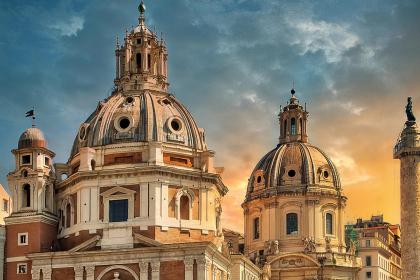
 Condividi
Condividi
Church of Santa Barbara dei Librai
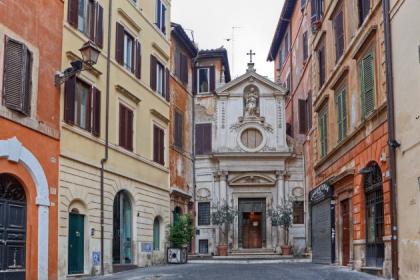
 Condividi
Condividi
Church of Santa Maria della Quercia
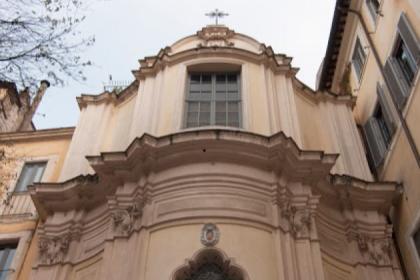
 Condividi
Condividi
The Church of Sant'Eligio degli Orefici
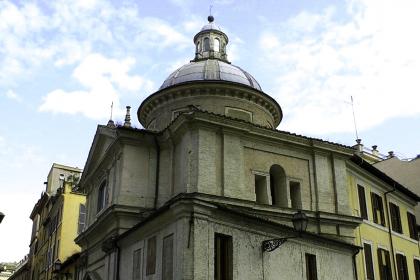
 Condividi
Condividi
Church of Sant'Anna dei Palafrenieri
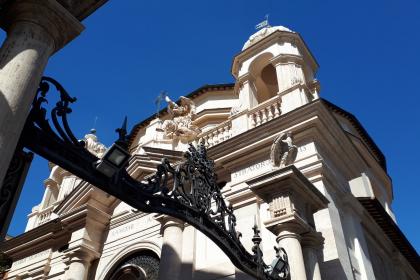
 Condividi
Condividi
Church of Santa Maria in Portico in Campitelli
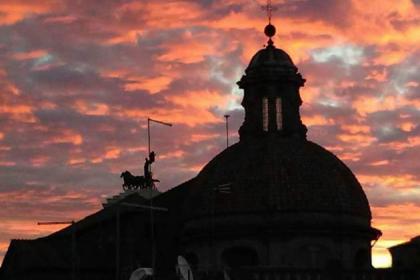
 Condividi
Condividi
The Borghese Gallery
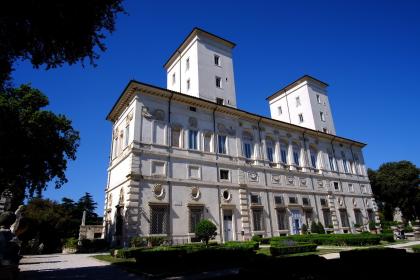
 Condividi
Condividi
Church of Santi Luca e Martina al Foro Romano
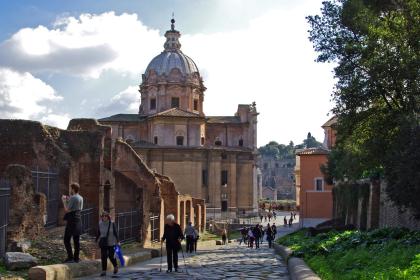
 Condividi
Condividi
Accademia Nazionale di San Luca
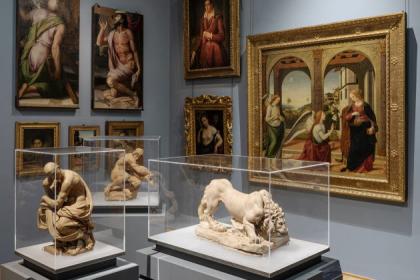
 Condividi
Condividi
The Roman Forum and the Palatine
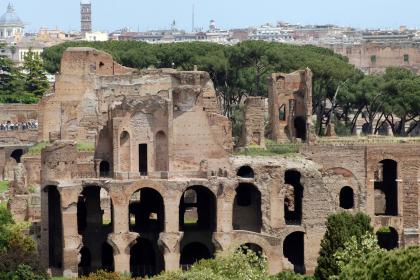
 Condividi
Condividi
Church of San Lorenzo de' Speziali in Miranda (formerly Temple of Antoninus and Faustina)
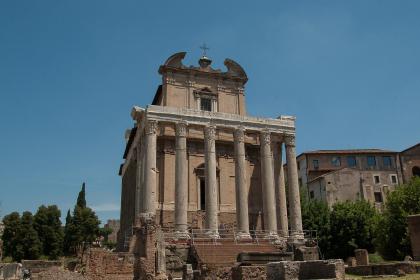
 Condividi
Condividi












































